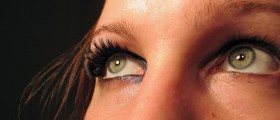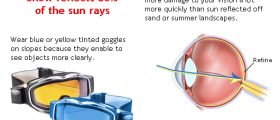
If you have been diagnosed with nystagmus, you might be confused by the name and the symptoms behind the condition. However, you have probably sought medical assistance due to the constant involuntary movements and twitching your eyes were prone to.
In order to provide assistance, the following lines will explain the reasons behind nystagmus, give adequate definition of the condition and help you find the best possible treatment for it. Thus, read on and learn more about nystagmus, since this is the first step towards treatment.
Definition of Nystagmus
Nystagmus, as it was mentioned above, is a condition manifesting through an involuntary movement of the eyes, usually taking place from side-to-side, even through there are cases where up and down movements are present as well. The frequency and manifestation of the movements may vary in intensity and speed, affecting either just one or both eyes. Most commonly, the latter case goes hand-in-hand with nystagmus.
Typically, this condition appears during one's childhood. Yet, there are cases where symptoms of nystagmus become visible only during later parts of a person's life. When it appears during childhood, however, it usually becomes noticeable from six weeks to three months of age.
Unfortunately, nystagmus is not a benign condition, since it may result in vision deterioration and reduction. Also, this condition may be a sign of some other, underlying health problems such as strabismus etc. Therefore, it is very important not to ignore nystagmus and to seek timely medical assistance and diagnosis.
Causes and Symptoms of Nystagmus
There are many different situations which can trigger the development of nystagmus. Firstly, the condition can stem from genetic factors, being inherited. Secondly, it can appear during the development of the fetus, or due to the problems during infancy, where the child does not manage to gain complete eye control. Additionally, skin pigmentation problems such as albinism can lead to the development of nystagmus too.
Yet, the list of possible culprits does not end here. Eye problems which may lead to nystagmus, having it as a side-effect are optic nerve degeneration, severe astigmatism and nearsightedness. Some other diseases, affecting the entire body, may trigger this eye problem too. These are multiple sclerosis, Meniere's diseases, strokes or direct injury to the head.
Alternatively, specific medications may lead to nystagmus, along with alcohol or drug abuse, inner ear problems or some completely unknown factors.
It is known that once nystagmus is present in one's family, he/she is more likely to suffer from it too. Also, suffering from any of the above mentioned diseases may increase your chances of developing nystagmus. Moreover, vitamin B12 and thiamine deficiency is also a known culprit.
As for the symptoms of nystagmus, there are quite a few. Basically, apart from the frequent involuntary movements, being the basic sign of this condition, sufferers are likely to experience photosensitivity, vision problems in darkness, general vision impairment, awkward positioning of the head, dizziness and sensations of the world shaking or moving.
Diagnosis and Treatment of Nystagmus
Once you seek medical assistance due to the fact that you are bothered by the symptoms of nystagmus, your doctor will conduct series of tests in order to diagnose or rule out the condition. Additionally, he/she will check your medical history and ask you some questions about the symptoms and the condition itself.
Basically, you are likely to undergo a full opthalmologic exam, along with the ear exam and vision testing. Your eye movements will be observed and recorded and your neurological activities will be monitored too. Sometimes, a CT scan or an MRI scan are necessary parts of the diagnostic procedure as well.
Once all the tests are performed, the doctor may suggest best possible ways of dealing with nystagmus, depending on the underlying causes of it. Many times, this condition is a permanent one and all the patient can do is give his/her best to control it and suppress it as much as possible.
In order to do this, he/she might need special contact lenses, prisms or tints. Eyeglasses can be necessary as well. Sometimes, finding a head and eye position which reduces or removes the nystagmus may be the best way of dealing with it. Alternatively, one might need to undergo vibratory stimulation of the face and neck, or take medications for treating this condition.
Botox injections and surgery are usually considered to be the last resort, used once all other treatment methods have failed.
Various hospitals have reported that in 0.002% of hospital consultations, nystagmus was the topic. However, in England, this condition required hospitalization in 91% of its occurrences, with men needing it in 57% of cases and women in 43%. However, in 39% of cases nystagmus appears only for a day, disappearing afterwards.
All in all, this involuntary movement of the eyes can vary in frequency, manifestation and characteristics. Nevertheless, it is very important to seek medical advice and assistance if the symptoms of this condition remain prevalent over a longer course of time.

















Your thoughts on this
Loading...